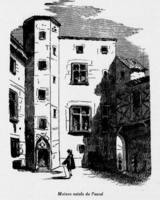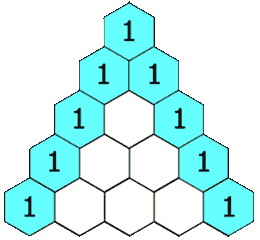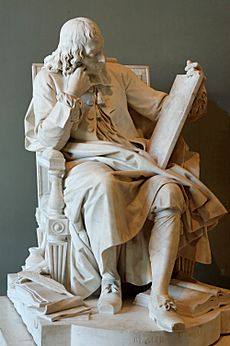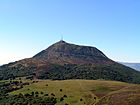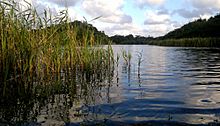Blaise Pascal facts for kids
Quick facts for kids
Blaise Pascal
|
|
|---|---|

Painting of Pascal made by François II Quesnel for Gérard Edelinck in 1691.
|
|
| Born | 19 June 1623 |
| Died | 19 August 1662 (aged 39) Paris, France
|
| Nationality | French |
| Era | 17th-century philosophy |
| Region | Western philosophy |
| School | Cartesianism Jansenism Fideism |
|
Main interests
|
|
|
Notable ideas
|
|
|
Influenced
|
|
| Signature | |
Blaise Pascal (born June 19, 1623 – died August 19, 1662) was a very smart French person. He was a mathematician, physicist, inventor, philosopher, and writer. He made many important discoveries and inventions.
Pascal was a child prodigy, meaning he was super talented from a young age. His dad, who was a tax collector, taught him at home. When he was only 16, Pascal wrote a big paper about conic sections in geometry.
Later, he worked with another famous mathematician, Pierre de Fermat, on something called probability theory. This idea helps us understand chance and risk, and it's still super important in things like economics today.
In 1642, when he was still a teenager, Pascal invented one of the first mechanical calculators. It was called the Pascaline. This machine could add and subtract, which was a huge deal back then!
Pascal also made big contributions to science. He studied how fluids work and helped explain ideas like pressure and vacuum. He showed that a vacuum (an empty space) could exist, which many scientists at the time didn't believe.
After a special religious experience in 1654, Pascal started writing famous books about philosophy and religion. His most well-known works are Lettres provinciales and Pensées. He was often sick throughout his life and passed away when he was just 39 years old.
Contents
Life and Early Discoveries
Growing Up and Learning
Blaise Pascal was born in Clermont-Ferrand, a city in the Auvergne region of France. His mother died when he was three years old. His father, Étienne Pascal, was a judge who loved science and math. Blaise had two sisters, Jacqueline and Gilberte.
In 1631, his family moved to Paris. Étienne decided to teach his children himself because they were all very smart. Blaise, especially, showed an amazing talent for math and science.
His First Big Math Paper
Pascal became very interested in the work of a mathematician named Girard Desargues. When Pascal was just 16, he wrote his first serious math paper. It was called "Essay on Conics" and talked about something called the "Mystic Hexagram." Today, we know this as Pascal's theorem. It's a cool idea about points on a circle.
Another famous thinker, René Descartes, couldn't believe that a 16-year-old had written such a smart paper. He thought Pascal's father must have written it!
Moving to Rouen and the Pascaline
In 1638, Pascal's family faced money problems because the government stopped paying back bonds. His father had to leave Paris for a while. Later, Étienne became a tax commissioner in Rouen.
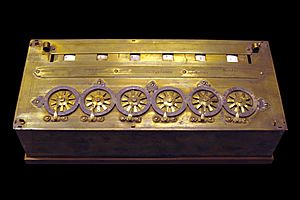
To help his dad with all the difficult tax calculations, Pascal invented a mechanical calculator in 1642. He was not even 19 yet! This machine, called the Pascaline, could add and subtract numbers. It was one of the first machines like it ever made.
Even though it was a groundbreaking invention, the Pascaline wasn't a big commercial success. It was expensive and a bit tricky to use. Still, Pascal kept improving his design and built about 20 finished machines over the next 10 years. These early calculators were important steps towards modern computers.
Amazing Work in Math and Science
Understanding Chance: Probability
Pascal's most important math discovery was in probability theory. This is the study of how likely events are to happen. He started working on this after a friend, the Chevalier de Méré, asked him about gambling problems.
Pascal worked with Pierre de Fermat on these ideas. They figured out how to divide winnings fairly in a game if players had to stop early. This led to the idea of "expected value." Today, probability theory is used in many fields, like economics and insurance.
Pascal's Triangle
In 1654, Pascal wrote about something called the "arithmetical triangle." Today, we call it Pascal's triangle. It's a pattern of numbers where each number is the sum of the two numbers directly above it. It looks like this:
| 0 | 1 | 2 | 3 | 4 | 5 | 6 | |
|---|---|---|---|---|---|---|---|
| 0 | 1 | 1 | 1 | 1 | 1 | 1 | 1 |
| 1 | 1 | 2 | 3 | 4 | 5 | 6 | |
| 2 | 1 | 3 | 6 | 10 | 15 | ||
| 3 | 1 | 4 | 10 | 20 | |||
| 4 | 1 | 5 | 15 | ||||
| 5 | 1 | 6 | |||||
| 6 | 1 |
This triangle shows many cool math properties and is used in different areas of mathematics.
The Cycloid Curve
In 1658, Pascal was suffering from a toothache. He started thinking about problems related to the cycloid, which is the curve traced by a point on the rim of a rolling wheel. When his toothache suddenly went away, he took it as a sign to continue his research! He even held a contest to publicize his findings.
Discoveries in Physics
Pascal made important contributions to physics, especially in how fluids behave and the concept of pressure. The unit of pressure, the pascal, is named after him!
How Fluids Work
Pascal studied hydrodynamics (fluids in motion) and hydrostatics (fluids at rest). He invented the hydraulic press, which uses fluid pressure to multiply force. This is how things like car lifts work today! He also invented the syringe.
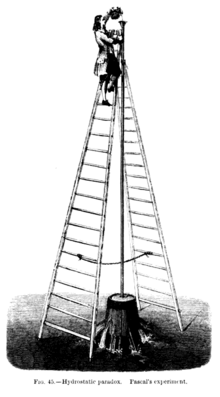
He showed that the pressure in a fluid depends on its height, not its total weight. He famously demonstrated this with the "Pascal's barrel" experiment. He attached a long, thin tube to a barrel of water and filled the tube up to a high floor of a building. The small amount of water in the tube created so much pressure that it made the barrel burst!
The Idea of a Vacuum
In 1647, Pascal learned about Evangelista Torricelli's experiments with barometers. Torricelli had shown that mercury in a tube could stay suspended, leaving an empty space above it. Many scientists, including René Descartes, believed that "nature abhors a vacuum" – meaning there could be no truly empty space. They thought some invisible matter filled everything.
Pascal did more experiments and wrote about his findings. He explained why there was indeed a vacuum above the mercury in a barometer. He also reasoned that if air has weight, then air pressure should be lower on a high mountain than at sea level.
Since Pascal was too sick to climb a mountain himself, his brother-in-law, Florin Périer, carried out the experiment for him. On September 19, 1648, Périer took a barometer up the Puy de Dôme mountain. As he climbed higher, the mercury in the barometer dropped, proving Pascal's idea! Pascal then repeated the experiment in Paris, climbing a tall church tower, and saw the same effect.
Later Life: Faith and Writing
A New Path
In 1646, Pascal's father broke his hip. Two doctors who followed a religious movement called Jansenism helped him recover. Pascal talked with them and started reading their books. This led to his "first conversion" to a more religious life.
After his father died in 1651, Pascal went through a period where he wasn't as focused on religion. But in November 1654, he had a very powerful religious experience. He wrote a short note about it, which he kept hidden in his coat for the rest of his life. This note is now known as the Memorial.
This experience changed Pascal's life. He became very committed to his faith and started writing important works about religion and philosophy.
Famous Writings
Pascal is considered one of the most important French writers of his time. He was known for his clever use of humor and satire.
The Provincial Letters
Between 1656 and 1657, Pascal wrote a series of 18 letters called Lettres provinciales (The Provincial Letters). He wrote them under a fake name. In these letters, he criticized some religious practices and ideas of the Jesuits. The letters were very popular because of Pascal's witty and sharp writing style. Even though the king ordered them to be burned, they influenced later famous writers like Voltaire.
Pascal famously apologized for writing a long letter by saying he "had no leisure to make it shorter."
The Pensées
Pascal's most famous book is the Pensées (Thoughts). It was not finished before he died, but it's considered a masterpiece of French writing. He wanted it to be a defense of the Christian faith.
The Pensées contains many deep thoughts about human nature, God, and the meaning of life. One famous line is: "Man is only a reed, the weakest in nature, but he is a thinking reed." This means humans are fragile, but our ability to think makes us special.
Last Years and Legacy
Pascal was often sick, especially after he turned 18. He believed that suffering was a natural part of life for Christians. In his last years, his health got much worse.
In 1661, Pascal helped start what might have been the first public bus line in Paris. These "carriages with five sols" had fixed routes and prices, and they left on time even if they weren't full. This idea of public transportation was far ahead of its time!
Blaise Pascal died on August 19, 1662, just two months after his 39th birthday. An examination after his death showed serious problems with his stomach and brain, but the exact cause of his illness is still unknown.
Pascal's work in mathematics, physics, and philosophy had a huge impact. He helped shape our understanding of probability, pressure, and the scientific method. His writings continue to inspire people today.
Works
- "Essai pour les coniques" [Essay on conics] (1639)
- Experiences nouvelles touchant le vide [New experiments with the vacuum] (1647)
- Récit de la grande expérience de l'équilibre des liqueurs [Account of the great experiment on equilibrium in liquids] (1648)
- Traité du triangle arithmétique [Treatise on the arithmetical triangle] (written c. 1654; publ. 1665)
- Lettres provinciales [The provincial letters] (1656–57)
- De l'Esprit géométrique [On the geometrical spirit] (1657 or 1658)
- Écrit sur la signature du formulaire (1661)
- Pensées [Thoughts] (incomplete at death; publ. 1670)
See also
 In Spanish: Blaise Pascal para niños
In Spanish: Blaise Pascal para niños
- Expected value
- Gambler's ruin
- Pascal's barrel
- Pascal distribution
- Pascal's mugging
- Pascal's pyramid
- Pascal's simplex
- Problem of points
- Scientific revolution
- List of pioneers in computer science
- List of works by Eugène Guillaume


